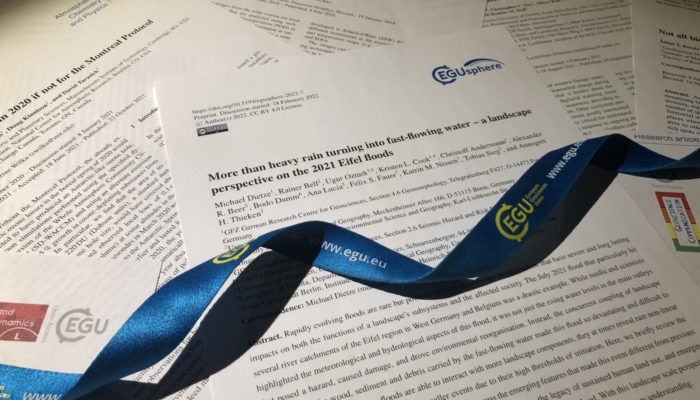
Some 20 years ago, a group of young atmospheric scientists united to shake up the scientific publishing world. Their novel idea was to make the peer review process transparent and allow the scientific community to participate in the discourse – in the truest sense of the word: “reviewed by the peers.” From day one, this has been the foundation that EGU’s open access journals were built on. Today, we are proud to say that we were able to turn a once-radical and innovative idea into a success story that still finds worldwide imitators and continues to be labeled “state-of-the-art.”
“Our guiding principle was to achieve the highest levels of scientific integrity through free speech and transparency” – Ulrich Pöschl, one of the scientists who initiated this process and who is now Director at the Max Planck Institute for Chemistry
But what does interactive peer review actually mean? And how is it different from the traditional review process still used in many international publishing houses?
Interactive peer review explained
To start off, interactive peer review is a two-stage process with an open discussion stage followed by a full peer-review process in the traditional style. But of course, there are more intermediate steps that are involved.
Step 1: After an author submits a manuscript, an assigned topical editor who is usually an expert in the subject area, decides whether the manuscript should be posted as a preprint, transferred to another EGU journal, or rejected. What may sound a bit harsh to authors, is in fact checking if the submission is within the scope of a journal and fulfils the desired scientific quality standards. At this stage, editors can also suggest technical corrections, but cannot suggest revisions to the scientific content.
Step 2: Once the manuscript has been accepted for preprint posting, it receives its DOI (digital object identifier) which makes it immediately citable, and it appears either on EGU’s preprint server EGUsphere or in the discussion forum of the respective journal.
Step 3: It is at this point that the interactive open discussion starts. For five to eight weeks, depending on the chosen journal, reviewers, authors, and members of the scientific community can publicly post comments on the preprint and in doing so, enter an interactive exchange of opinions and information sharing which usually allows the authors to improve the quality of their manuscript.
Step 4: After the discussion phase, community comments are no longer accepted, and the authors are asked to submit a revised version that addresses the recommendations of the reviewers.
At this early stage, just about 8 weeks after submission, an editor can already accept a manuscript for publication, but most submissions move on to the next stage:
Step 5: The traditional part of the peer review process, with additional rounds of revision and final acceptance for publication or rejection.
The big R(ejection)
Rejection during the review process is something understandably feared by authors as the final blow to a paper, but the rejection of a manuscript may often also feel frustrating for the handling editor and reviewers who committed time and effort to review the manuscript and suggest changes to improve its quality. The further down the line a rejection occurs, the less satisfied everyone involved feels. However, this experience has also been improved by EGU’s tried-and-tested review model.
Over the past few years, we observed a trend of low rejection rates across all our journals after the discussion phase (see table below), on average as low as 7.4%. This impressive statistic can most certainly be attributed to the high-quality work of our editors. Manuscripts that have a low chance of being published in one of our 19 open-access journals do not even enter the discussion stage and are carefully sorted out beforehand.

This table highlights the journal acceptance rate of manuscripts once the manuscript has entered the discussion phase.
So what is the benefit for authors, you might ask? From an author’s perspective, it is encouraging to know that once a manuscript has entered the discussion phase, there is a high chance that it gets published! Don’t we all love a success story?
Likewise, for our invited reviewers it means that, as a reviewer, you can be confident that the quality of the manuscripts presented to you for review by our editors is good, and the papers have a very high chance of being published. This means if you are invited to be a reviewer by an EGU journal you can be fairly certain that you will be spared the feeling of wasted time in reviewing manuscripts that will just end up being be lost to rejection.
Does this sound good to you? Maybe next time you are choosing a journal to publish your manuscript, why not consider one of our EGU open-access journals. We are interactive, transparent, and fair, and publish journals by scientists, for scientists!




